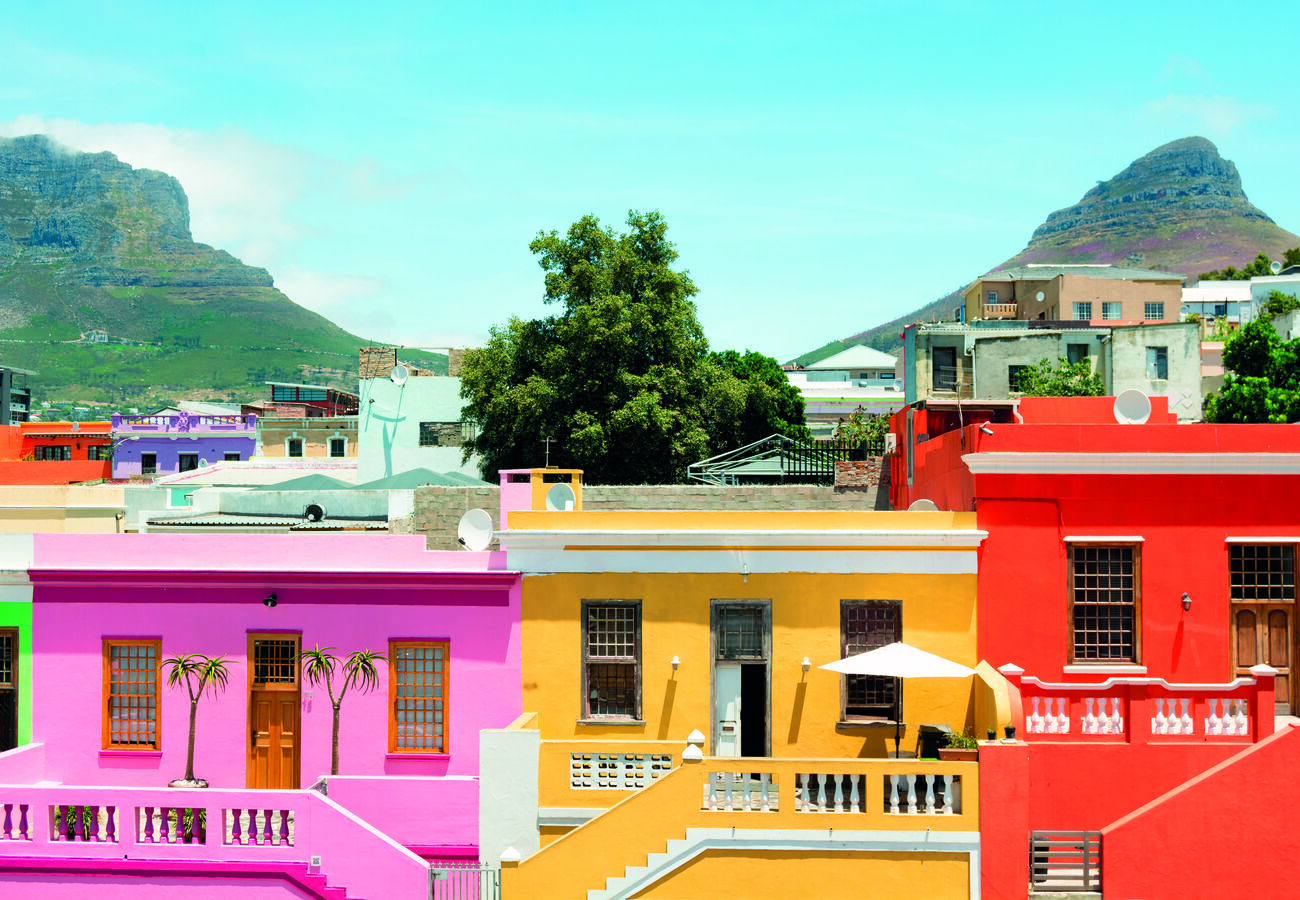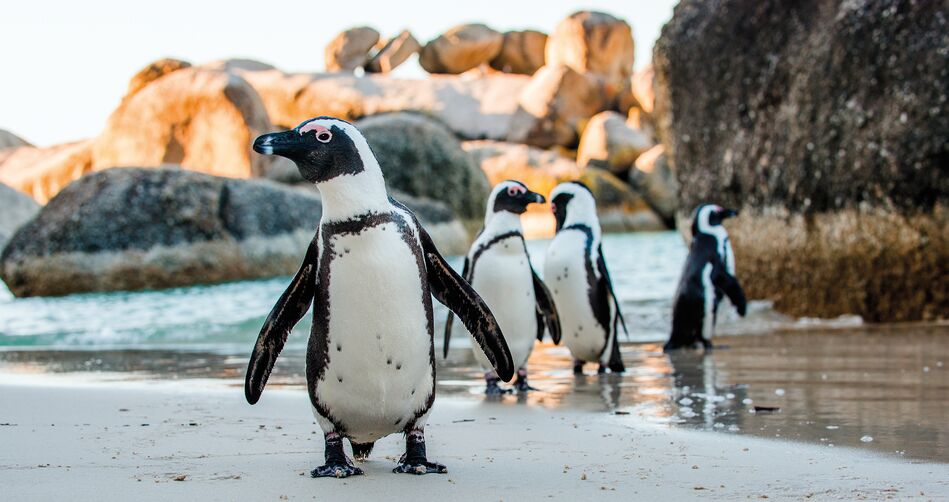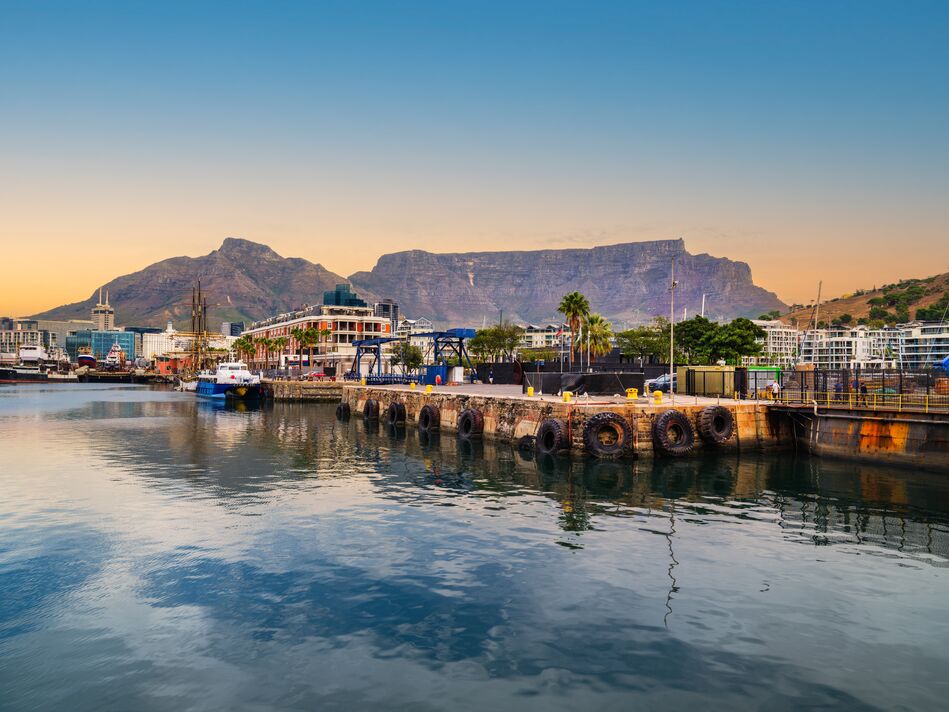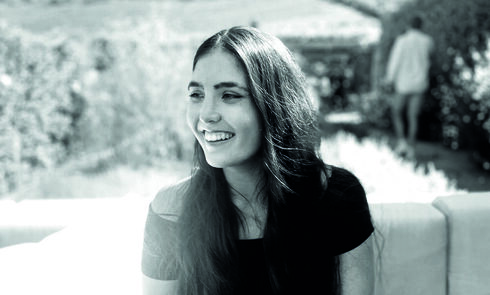Where the mountain meets the sea
Clarisse Beeby – a Capetonian at heart – admires a melting pot of cultures and contradictions at the southern tip of Africa.
Published 24 July 2025
By the second morning in Cape Town, I’ve stopped checking the time and started watching the light. The city does not rise shyly. It surges up. A wall of mountain, plastered in pink and peach with the first glimmers of sunlight, throws its arms around the patchwork of neighbourhoods – Bo-Kaap’s bright cubes, Sea Point’s trim promenades, Constantia’s crisscross of vineyards – and holds them, lovingly, against the sapphire push of the Atlantic.
My host, a woman named Raeesa who speaks English, Afrikaans and a fast-moving Cape Malay hybrid of the two, serves me rooibos tea in a chipped china cup and suggests, with a wink, that I climb Lion’s Head before the tourists wake up and slow the view down. I take the bait. At dawn, the path is a soft scratch across the mountainside. I climb with the wind – a typical Southeaster, or the Cape Doctor, as it’s locally known – at my back, the city still sleeping below, except for a trail runner with a headlamp and two teenagers carrying a Bluetooth speaker and a bottle of Coke. At the summit, we are all silent. The sea on one side. The City Bowl on the other. Table Mountain behind me, flat and regal.

Cape Town invites you to move – through space, through history, and through meals eaten with your hands. One evening, I enjoy a lively dinner at Rands, a township chisa nyama (Zulu word for barbecue) joint in Khayelitsha where meat is currency and community is gospel. A man with a beer boep (belly) hands me a wooden board stacked with sizzling boerewors and flame-licked chicken wings dripping in a ‘secret sauce’. Beside me, a woman in heels drenches pap (soft maize porridge) in a lick of chakalaka (spicy vegetable relish), smiling as she eyes the jovial crowd starting to gather around the DJ. “This is why we braai (Afrikaans word for barbecue),” she says, gesturing at the smoke curling up from steel drums and the patrons breaking it down in pantsula (a local South African dance style). “It brings people together.”
Another night, I wind my way to Bo-Kaap, drawn by the smell of cardamom and clove drifting through the rainbow-painted streets. There, in a corner café called Biesmiellah, a bowl of bobotie arrives: a golden cap of baked egg custard gives way to curried mince, sweet with raisins and sharp with vinegar. “Taste that?” the waiter asks. “That’s 300 years of survival.” He tells me that the recipe – part Dutch, part Indonesian, part Muslim resistance – traces back to the slaves brought to the Cape in the 17th century.
t breakfast. At lunch. At dinner. Table Mountain watches me, always. On one blue-sky morning, I ascend by cable car, ears popping, the floor rotating beneath my feet as if the city must be viewed from every angle at once. At the top, tourists pose for photos, arms stretched toward invisible gods. But step beyond the lookout, past a patch of fynbos (indigenous flora) freckled with dusty pink proteas and golden pincushions, and there’s stillness. A dassie (like a fluffy, overfed guinea pig) watches me with the bored tolerance of a creature who’s seen too many of us. From here, I start to understand the mountain’s pull – not just its scale or status as one of the New 7 Wonders of Nature, but the way it centres the city, fixes it in place. Capetonians orbit it instinctively. And when that tablecloth of cloud slips over the summit, everyone in Cape Town feels slightly adrift, as if their compass has vanished into the mist.
Later that day, I take a leisurely drive south along Chapman’s Peak, the kind of road that makes your chest expand with the scenery. I stop at Noordhoek Beach – empty save a single horse and its sun-leathered rider – then carry on to Simon’s Town, where tuxedoed penguins waddle along Boulders Beach as if late for a wedding. When they swim, it’s like watching a joke unfold in reverse: silly creatures transformed into torpedoes of grace.

Everywhere you look, it’s a city rampant with contradictions. Gleaming glass-walled shopping centres shadowed by corrugated iron shacks. Fine dining restaurants that plate local ingredients with tweezers, steps away from street stalls where you can buy three samosas and a Coke for less than a quid. One evening, I find both in the same place: the Oranjezicht City Farm Market, where linen-clad locals sip kombucha beside dreadlocked kids licking chocolate from their fingers. Much like Cape Town herself, it’s a melting pot of cultures: sticky pork belly on a pillowy bao bun, crispy bitterballen dipped in tangy mustard or soft, puffy vetkoek (deep-fried bread) slathered in sweet apricot jam – nothing is out of place here. I sit on wooden benches, beanbags and bar stools. I drink fynbos gin and craft beer, black coffee and pinotage. I eat five different desserts and justify every bite. A young chef with a neck tattoo and a white apron tells me, “The food scene here is about mixing it up. Past meets present meets whatever we find in the pantry.”
Before the wave of ‘magie vol, oogies toe’ hits (that point of contentment when your stomach is blissfully full and your eyes get heavy, ready for a nap), I head to the V&A Waterfront and take the ferry to Robben Island. The guide, once imprisoned here, walks us through the cells with the weariness of repetition. “This was Mandela’s cell,” he says, pausing by a narrow concrete rectangle. “He was here for 18 years. You’re here for 18 minutes.” I look in and feel time collapse. The sea is glittering just beyond the bars.

Back in the city, I need air. I meander through the Company’s Garden, where squirrels perform acrobatics for crumbs and elderly men debate politics beneath oaks planted in 1652. A boy sells roses from a bucket. I buy one and leave it on a bench, just to watch what happens. I find myself strolling the Sea Point Promenade as the sun folds into the horizon. Children zip past on scooters. Couples walk their dogs. A man juggles while jogging. Cape Town, it turns out, does not brood for long. Even its darkest memories are met with movement.
By the time the beat of the African drums finds you – half-lost in a coastal haze somewhere between Green Point and Camp’s Bay – you’ve already fallen under Cape Town’s spell. It creeps in slowly, slyly. And when it’s time to leave, you’ll notice it suddenly: how deeply the place has settled into your bones. As I sip coffee at a steampunk café that takes its beans – and its brass pipework – seriously, the waitress asks what I’ll miss most. I say the food. She smiles. “You mean the food, the view, and the people who argue about both at the same table?” Indeed, that’s exactly what I’ll miss, and so much more.
